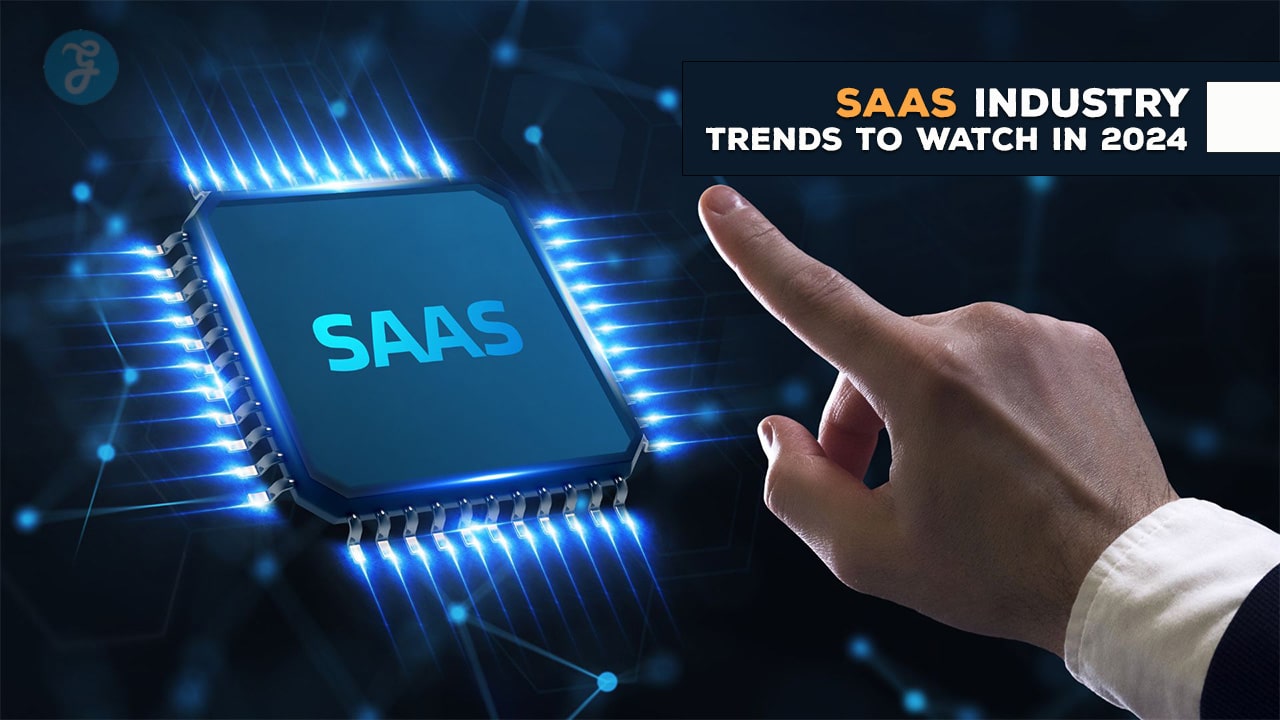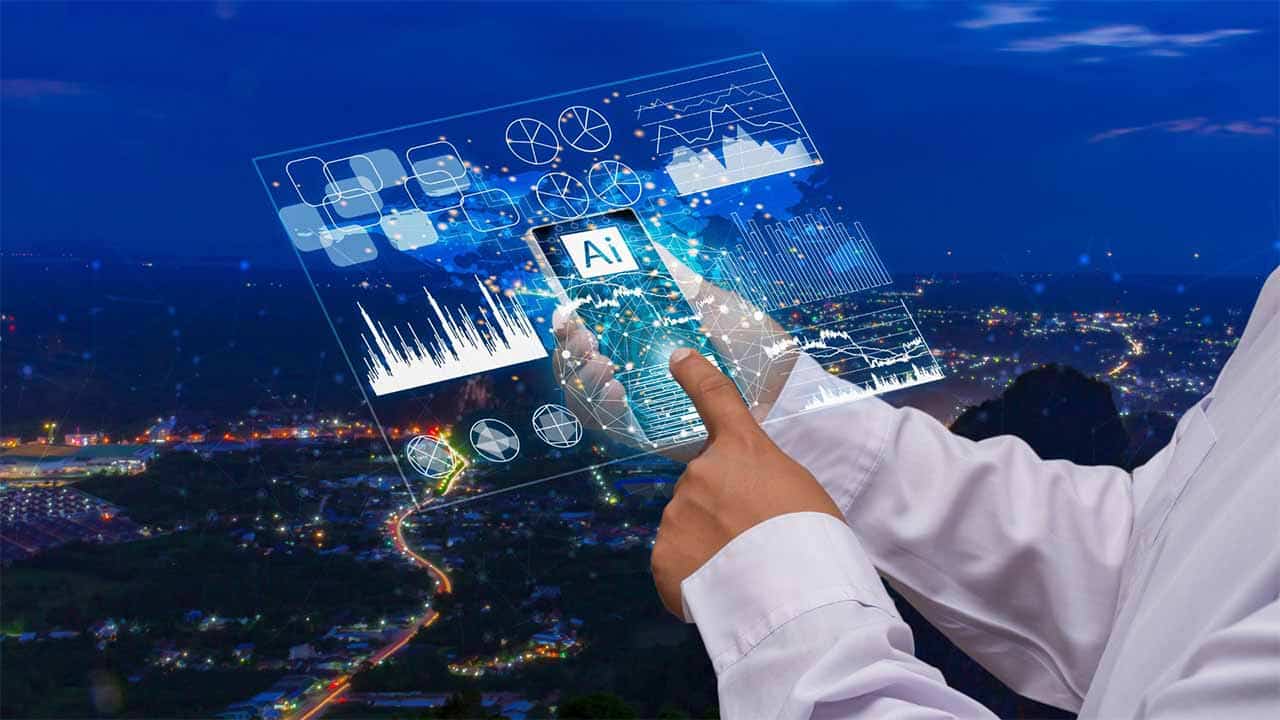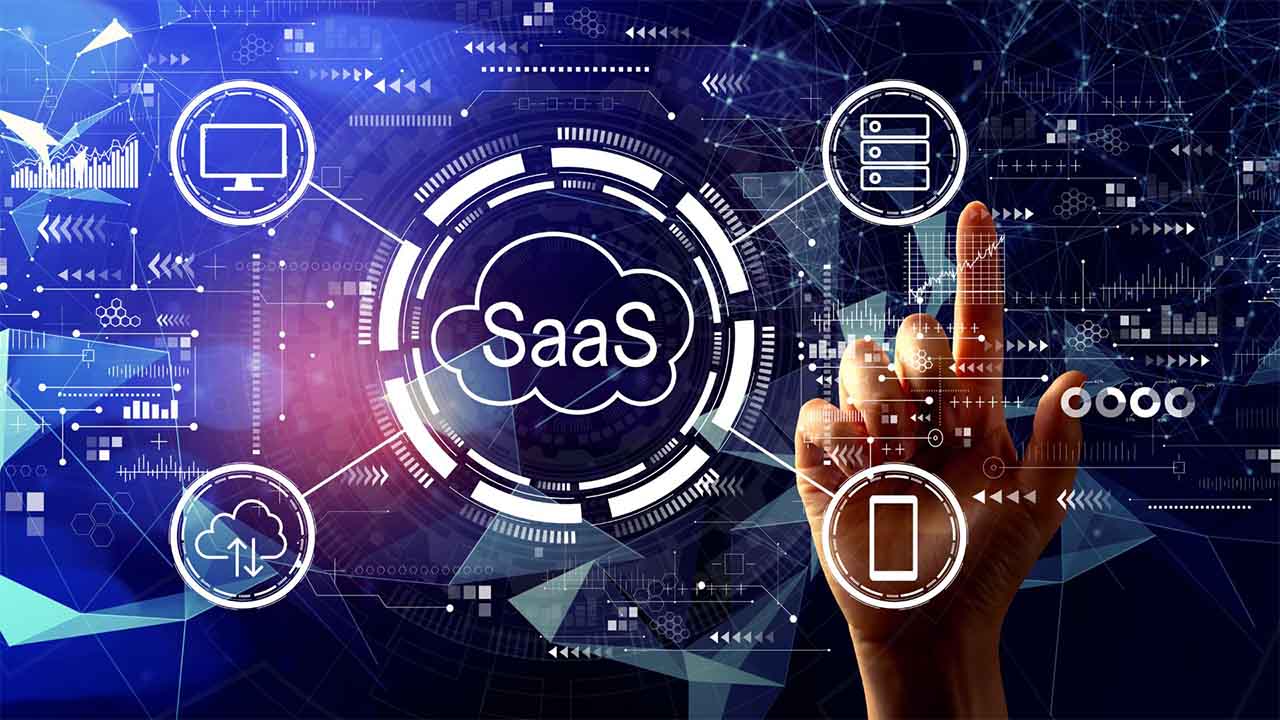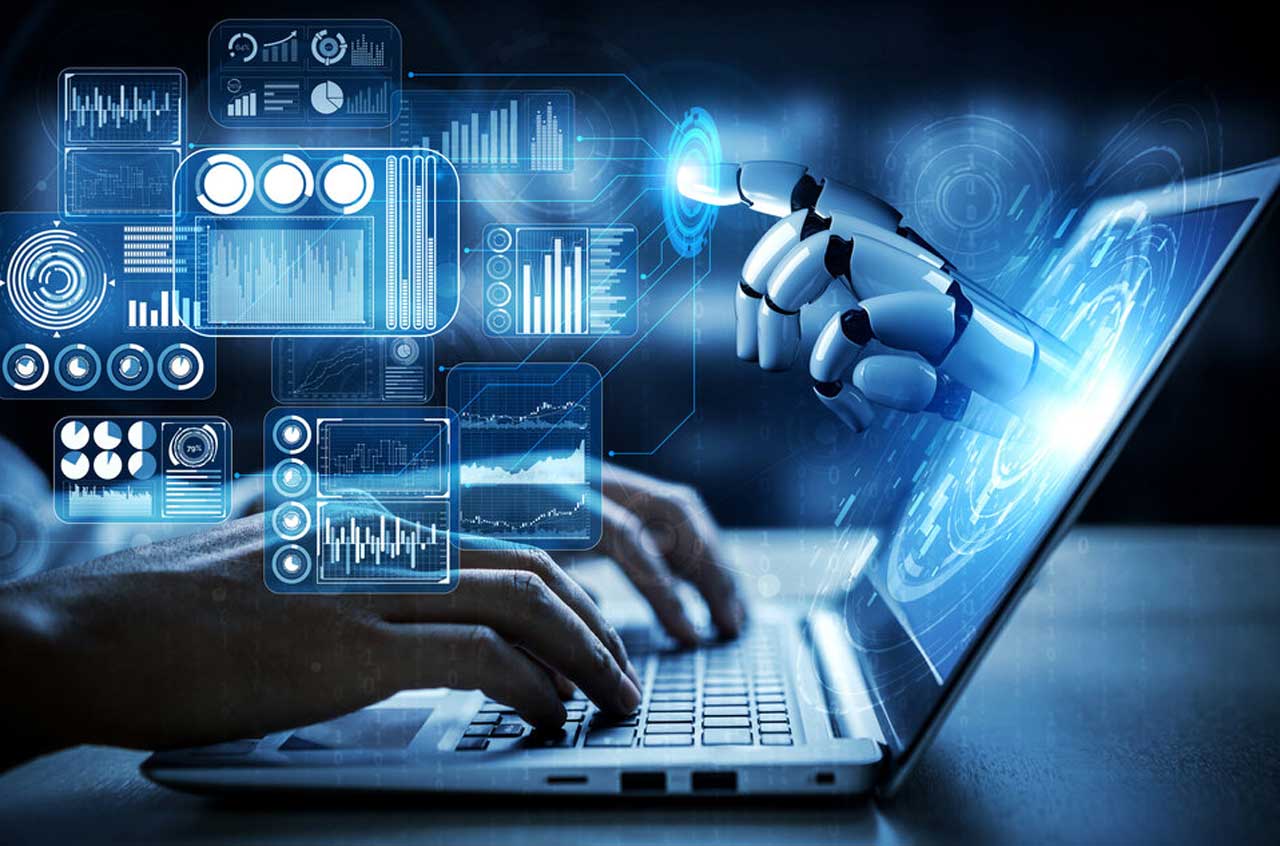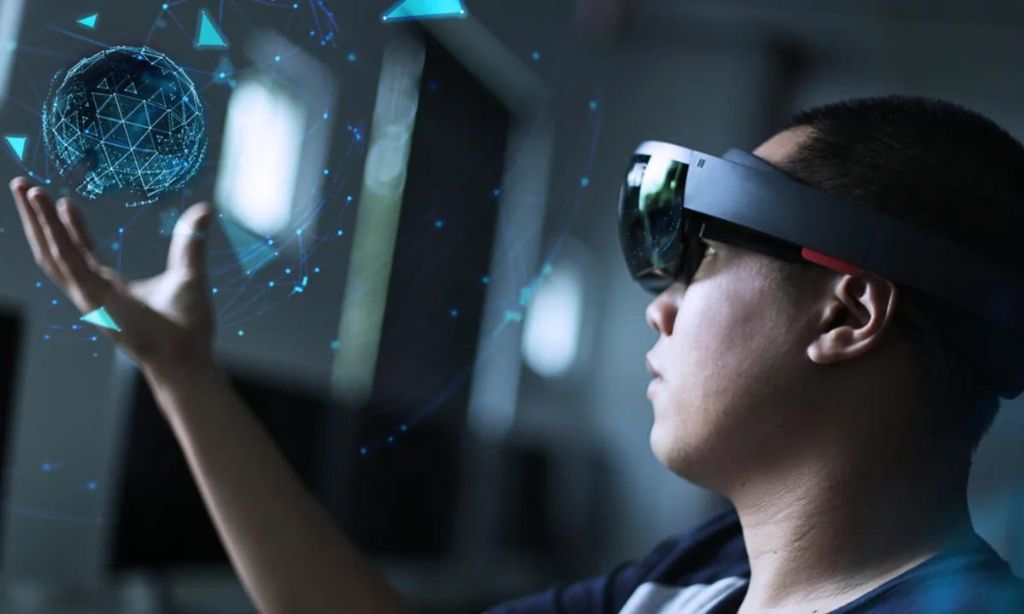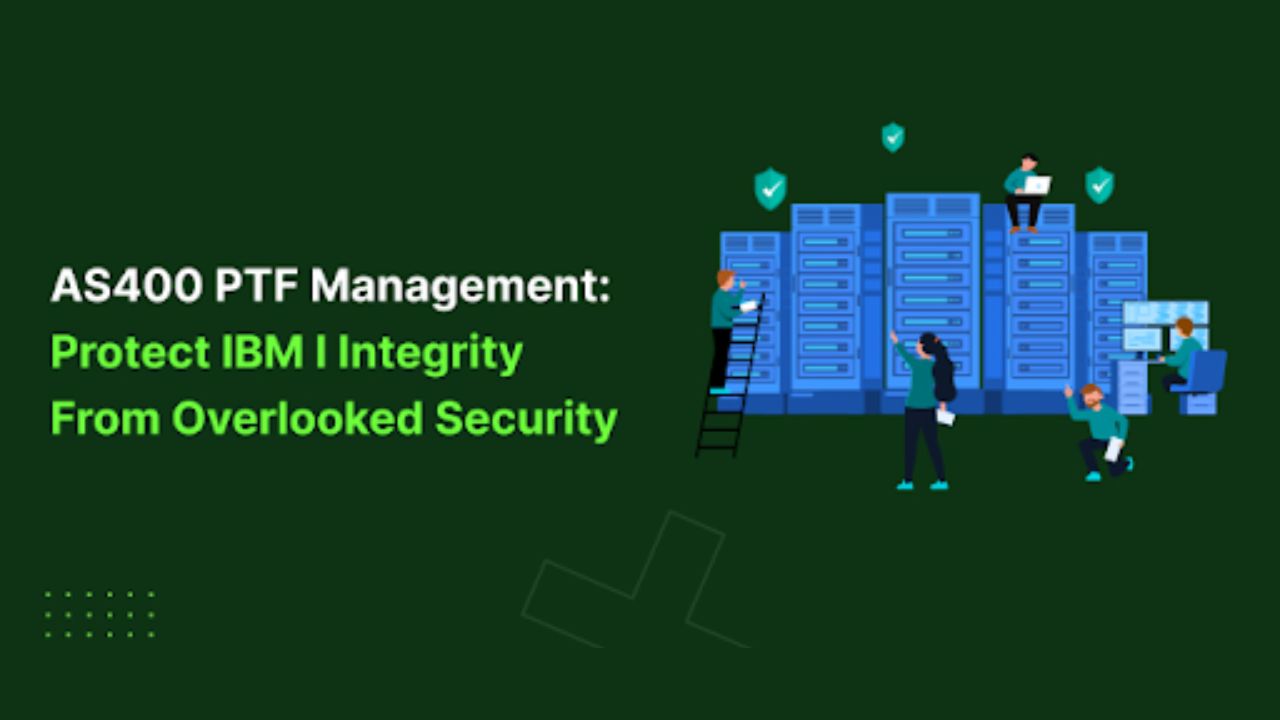The Software as a Service (SaaS) industry is always changing. In 2024, we expect to see many new trends. These trends will shape how businesses use software. They will also affect how SaaS companies operate. This article looks at 20 key trends to watch in the SaaS world in 2024.
SaaS has come a long way since its early days. Remember when we had to install bulky software from CDs? Those days are long gone. Now, with just a few clicks, you can access powerful tools that run smoothly in your web browser or on your smartphone.
But what’s next for SaaS? What new innovations and trends will shape the industry in 2024? Whether you’re a business owner looking to stay ahead of the curve, a tech enthusiast eager to glimpse the future, or just someone who uses software in your daily life (and let’s face it, who doesn’t?), this article is for you.
We’re about to dive into 20 key trends that are set to revolutionize the SaaS landscape in 2024. From artificial intelligence that feels almost human, to software that knows your industry inside out, to tools that put privacy first – there’s a lot to look forward to.
So, grab a cup of coffee, get comfortable, and let’s explore the future of SaaS together. Trust me, by the time you finish reading this, you’ll be just as excited about the future of software as we are!
1. Artificial Intelligence: Your New Digital Coworker
Artificial Intelligence (AI) isn’t just a buzzword anymore. In 2024, it’s becoming a core part of SaaS, almost like a digital coworker that’s always ready to help.
Imagine opening your email and finding that the most important messages have already been flagged for you. Or picture a customer service platform that can handle most queries on its own, only bringing in human agents for the trickiest issues. That’s the power of AI in SaaS.
Here’s what we’re seeing:
- Smarter Analytics: AI is getting better at crunching numbers and spotting trends. In 2024, your business intelligence tools might tell you about a sales trend before your team even notices it.
- Predictive Features: SaaS tools are starting to predict what you need before you ask. A project management tool might suggest task priorities based on your team’s past behavior and current workload.
- Natural Language Processing: Talking to software is becoming more natural. You might soon be able to ask your CRM, “Who are our top customers this quarter?” and get an instant, accurate response.
- Personalization at Scale: AI is making it possible for SaaS tools to adapt to each user’s preferences and habits, creating a unique experience for everyone.
The best part? You don’t need to be a tech wizard to benefit from AI in SaaS. These features are being designed to be user-friendly and intuitive. It’s like having a super-smart assistant that learns and adapts to help you work better.
2. Vertical SaaS: Software That Speaks Your Industry’s Language
Remember the days when you had to adapt your work processes to fit your software? Those days are numbered, thanks to the rise of Vertical SaaS.
Vertical SaaS is all about creating software solutions tailored to specific industries. It’s like having a custom-made suit instead of an off-the-rack one – it just fits better.
Here’s what’s exciting about Vertical SaaS in 2024:
- Industry-Specific Features: A Vertical SaaS solution for healthcare might include built-in HIPAA compliance features, while one for real estate could have integrated property valuation tools.
- Faster Implementation: Because these solutions are pre-configured for your industry, you can get up and running much faster than with generic software.
- Better Data Insights: Vertical SaaS tools often come with industry-specific analytics and benchmarks, helping you understand how you’re performing compared to similar businesses.
- Compliance Made Easy: Many industries have specific regulations to follow. Vertical SaaS solutions often have these compliance requirements built right in.
- Specialized Integrations: These tools often come with pre-built integrations with other software commonly used in your industry.
For example, a Vertical SaaS solution for restaurants might include features for menu planning, ingredient sourcing, table management, and integration with popular food delivery platforms – all in one package.
The bottom line? Vertical SaaS means you spend less time adapting software to your needs and more time focusing on what you do best.
3. Data Privacy and Security: Building Digital Fort Knox
In an age where data breaches make headlines almost weekly, SaaS companies are doubling down on security and privacy. It’s not just about protecting data anymore – it’s about building trust.
Here’s what’s new in SaaS security for 2024:
- Zero Trust Architecture: This approach assumes no user or system should be trusted by default, even if they’re already inside the network perimeter. It’s like having a security guard that checks everyone’s ID, even if they work in the building.
- AI-Powered Threat Detection: AI is getting better at spotting unusual patterns that might indicate a security threat. It’s like having a super-vigilant watchdog that never sleeps.
- Encryption Everywhere: More SaaS providers are using end-to-end encryption, meaning your data is scrambled not just when it’s stored, but also when it’s being transmitted.
- Privacy by Design: SaaS companies are baking privacy features into their products from the ground up, rather than adding them as an afterthought.
- Compliance Automation: With regulations like GDPR and CCPA in place, SaaS tools are including features to automatically help businesses stay compliant.
- User Education: Many SaaS providers are offering more resources to help users understand and implement best security practices.
Think of it this way: using a SaaS product in 2024 is becoming more like storing your valuables in a high-tech bank vault, complete with retina scanners and robot guards, rather than just hiding them under your mattress.
4. Low-Code and No-Code: Democratizing Software Development
Remember when creating a website meant learning HTML? Low-code and no-code platforms are doing for software development what website builders did for web design – making it accessible to everyone.
Here’s why this trend is taking off in 2024:
- Rapid Development: With low-code platforms, what used to take months can now be done in weeks or even days. It’s like building with Lego blocks instead of making each brick from scratch.
- Citizen Developers: These platforms are empowering non-technical staff to create solutions for their own needs. Imagine an HR manager being able to create a custom leave management system without calling IT.
- Cost-Effective: By reducing the need for specialized developers, these platforms can significantly cut software development costs.
- Flexibility: Low-code platforms often allow for easy customization and integration with other systems, giving you the best of both worlds – ease of use and flexibility.
It’s important to note that low-code and no-code platforms aren’t replacing traditional development – they’re complementing it. They’re great for many business applications, while complex, high-performance systems still require traditional coding.
This trend is like giving everyone a set of digital building blocks. You might not be able to build a skyscraper, but you can certainly create a functional and attractive house that meets your needs.
5. Micro-SaaS: Small Solutions, Big Impact
In a world of all-in-one software suites, Micro-SaaS products are like specialized tools in a handyman’s belt. They do one thing, and they do it really well.
Here’s what’s exciting about Micro-SaaS in 2024:
- Niche Solutions: These products often address very specific pain points that larger software packages might overlook. Think of a tool that only manages podcast show notes, or an app that’s solely for tracking plant growth.
- Quick Implementation: Because they’re focused, Micro-SaaS tools are often easier and quicker to start using. It’s like picking up a pen versus learning to use a complex printing press.
- Affordable Pricing: Many Micro-SaaS products offer pay-as-you-go or very affordable subscription models, making them accessible to small businesses and individuals.
- Personal Touch: Often created by small teams or individual developers, Micro-SaaS products frequently offer more personalized customer support.
- Integration Friendly: Many Micro-SaaS tools are designed to play nice with other software, easily slotting into your existing workflow.
Micro-SaaS is proof that sometimes, less really is more. It’s about finding the right tool for the job, rather than a Swiss Army knife that does everything adequately but nothing exceptionally.
6. Enhanced Mobile Experiences: Your Office in Your Pocket
Remember when “mobile-friendly” meant a website that didn’t look completely broken on your phone? In 2024, mobile experiences in SaaS are not just an afterthought – they’re often the main event.
Here’s what’s new in mobile SaaS:
- Feature Parity: Mobile apps are catching up to their desktop counterparts. You can often do just as much on your phone as you can on your computer.
- Responsive Design 2.0: It’s not just about fitting on the screen anymore. SaaS UIs are being reimagined to work intuitively with touch controls and smaller displays.
- Offline Functionality: More SaaS apps are offering robust offline modes, allowing you to work without an internet connection and sync when you’re back online.
- Mobile-First Development: Many SaaS products are now being designed for mobile first, with desktop as a secondary consideration.
- Integrated Device Features: Mobile SaaS apps are making better use of built-in phone features like cameras, GPS, and biometric authentication.
- Cross-Device Syncing: Start a task on your phone and finish it on your laptop without missing a beat.
Imagine reviewing and approving your team’s work while waiting for your coffee, or updating your sales pipeline during your commute. That’s the power of enhanced mobile SaaS experiences.
It’s like having your entire office in your pocket, ready whenever and wherever inspiration (or necessity) strikes.
7. Subscription Model Evolution: Flexibility is Key
The days of one-size-fits-all pricing in SaaS are fading. In 2024, we’re seeing a revolution in how SaaS products are priced and sold.
Here’s what’s changing:
- Usage-Based Pricing: Pay only for what you use. It’s like your electricity bill – the more you use, the more you pay, but you’re not locked into a fixed rate.
- Modular Subscriptions: Instead of all-or-nothing packages, many SaaS providers are letting customers pick and choose the features they need.
- Flexible Commitment Periods: Annual contracts are being joined by monthly, quarterly, and even pay-as-you-go options.
- Pause Features: Some SaaS providers are allowing customers to temporarily pause their subscriptions during slow periods.
- Freemium 2.0: Free tiers are becoming more generous, with clearer upgrade paths to paid features.
- Value-Based Pricing: Some B2B SaaS companies are experimenting with pricing models tied to the value they provide, such as a percentage of cost savings or revenue increases.
This evolution is making SaaS more accessible and fair for businesses of all sizes. It’s like going from a buffet where you pay one price regardless of how much you eat, to a restaurant where you only pay for the dishes you order.
The result? Businesses can be more agile with their software choices, scaling up or down as needed without being locked into long-term, one-size-fits-all contracts.
8. Integration and API-First Approach: Playing Well with Others
In 2024, no SaaS is an island. The ability to connect and work seamlessly with other tools is becoming less of a nice-to-have and more of a must-have.
Here’s what we’re seeing:
- Open APIs: More SaaS providers are offering robust, well-documented APIs that allow for deep integrations with other software.
- Integration Marketplaces: Many SaaS platforms now have their own app stores, showcasing pre-built integrations with other popular tools.
- Webhooks and Event-Driven Architecture: This allows different systems to communicate in real-time, triggering actions based on events in other applications.
- iPaaS (Integration Platform as a Service): These tools are making it easier for non-technical users to create integrations between different SaaS products.
- Microservices Architecture: This approach allows for more flexible and scalable integrations between different parts of a SaaS ecosystem.
- Data Portability: It’s becoming easier to move your data between different SaaS tools, reducing vendor lock-in.
Imagine your project management tool automatically creating tasks from your CRM when a deal is won, or your accounting software updating your inventory system in real-time. That’s the power of deep integration.
This trend is turning the SaaS landscape from a collection of separate tools into an interconnected ecosystem. It’s like going from a toolbox full of individual tools to a workshop where all the machines work together seamlessly.
9. Machine Learning: Software That Learns and Adapts
Machine Learning (ML) is taking AI in SaaS to the next level. While AI is about machines mimicking human intelligence, ML is about machines learning and improving from experience – without being explicitly programmed.
Here’s how ML is changing SaaS in 2024:
- Predictive Analytics: ML algorithms can analyze historical data to predict future trends, helping businesses make more informed decisions.
- Personalization at Scale: ML can help SaaS products adapt to individual user preferences and behaviors, creating a unique experience for each user.
- Anomaly Detection: ML is great at spotting unusual patterns, which is useful for everything from fraud detection to predictive maintenance.
- Natural Language Processing: ML is improving how software understands and generates human language, enabling more natural interactions with users.
- Automated Decision Making: In some cases, ML algorithms can make decisions or take actions autonomously, based on predefined criteria.
- Continuous Improvement: ML models can be designed to learn and improve over time as they process more data.
Think of ML in SaaS as giving your software a brain that grows smarter over time. The more you use it, the better it gets at helping you.
10. User Experience (UX) Focus: Making Software a Joy to Use
In 2024, great features alone aren’t enough – SaaS products need to be a joy to use. User Experience (UX) is taking center stage, with companies investing heavily in making their products intuitive, efficient, and even delightful.
Here’s what’s new in SaaS UX:
- Intuitive Interfaces: Designers are focusing on creating interfaces that feel natural and require minimal learning.
- Personalized Experiences: SaaS products are adapting to individual user preferences and habits, creating a unique experience for each user.
- Micro-interactions: Small, subtle animations and responses are being used to make interfaces feel more alive and responsive.
- Accessibility: There’s a growing focus on making SaaS products usable for people with various disabilities.
- Simplified Onboarding: Getting started with new software is becoming easier, with interactive tutorials and contextual help.
- Dark Mode: More SaaS products are offering dark mode options, which can reduce eye strain and save battery life.
- Voice and Gesture Controls: Some SaaS products are experimenting with alternative input methods to make interaction more natural.
Great UX in SaaS is like having a well-designed kitchen – everything is where you expect it to be, it’s a pleasure to use, and it makes your work more efficient and enjoyable.
11. Blockchain in SaaS: Beyond Cryptocurrencies
When most people hear “blockchain,” they think of Bitcoin. But in 2024, blockchain is making waves in the SaaS world too. It’s all about creating trust, transparency, and security in digital transactions.
Here’s how blockchain is shaping SaaS:
- Smart Contracts: These are self-executing contracts with the terms written into code. They’re being used in SaaS for everything from automatic payments to service level agreements.
- Enhanced Security: Blockchain’s decentralized nature makes it extremely difficult to tamper with data, providing an extra layer of security for sensitive information.
- Supply Chain Management: SaaS products are using blockchain to create transparent, traceable supply chains.
- Identity Verification: Some SaaS platforms are using blockchain for secure, decentralized identity management.
- Tokenization: This allows for the creation of digital assets, which can be used for things like loyalty programs or access rights.
For example, a project management SaaS might use blockchain to create an unalterable record of project milestones and approvals. Or a healthcare SaaS could use it to securely share patient data between providers while maintaining patient privacy.
Think of blockchain in SaaS as a digital notary – it’s there to make sure everything is exactly as it should be, creating trust in digital interactions.
12. Edge Computing: Bringing SaaS Closer to You
In the world of SaaS, speed matters. That’s where edge computing comes in. It’s all about moving data processing closer to where it’s needed, reducing latency and improving performance.
Here’s what edge computing means for SaaS in 2024:
- Faster Response Times: By processing data closer to the user, SaaS applications can respond more quickly.
- Improved Reliability: Edge computing can help applications work even when internet connectivity is poor.
- Real-time Processing: This is crucial for applications that need to make split-second decisions, like in IoT or AI-driven SaaS products.
- Reduced Bandwidth Costs: By processing data locally, less information needs to be sent to central servers, potentially reducing costs.
- Enhanced Privacy: Sensitive data can be processed locally, without needing to be sent to the cloud.
Imagine a retail SaaS that can process transactions locally during an internet outage, or an IoT management platform that can make real-time decisions without the delay of communicating with a distant server.
Edge computing in SaaS is like having a mini data center right where you are – it brings the power of the cloud closer to home.
13. Customer Success: More Than Just Support
In 2024, SaaS companies aren’t just focusing on selling software – they’re invested in making sure their customers succeed. This shift from customer support to customer success is changing how SaaS companies interact with their users.
Here’s what’s new in customer success:
- Proactive Outreach: Instead of waiting for customers to report problems, SaaS companies are reaching out proactively to help customers get the most out of their software.
- Personalized Onboarding: Companies are creating customized onboarding experiences based on each customer’s specific needs and goals.
- Usage Analytics: SaaS providers are using data to understand how customers are using their products and where they might need help.
- Success Metrics: Companies are working with customers to define what success looks like and tracking progress towards those goals.
- Educational Resources: Many SaaS providers are creating extensive libraries of tutorials, webinars, and best practices to help customers succeed.
- Customer Health Scores: SaaS companies are developing sophisticated metrics to gauge customer satisfaction and likelihood of renewal.
For example, a marketing automation SaaS might notice that a customer isn’t using a key feature and proactively reach out with a personalized tutorial. Or an accounting SaaS might offer custom training sessions at the start of tax season.
Think of customer success in SaaS like having a personal trainer for your software – they’re there to make sure you’re getting the most out of your investment and achieving your goals.
14. Platform as a Service (PaaS): Building on Solid Ground
Platform as a Service (PaaS) is taking SaaS to the next level. It’s not just about using software anymore – it’s about having a foundation to build your own solutions.
Here’s what PaaS brings to the table in 2024:
- Rapid Development: PaaS provides the tools and infrastructure needed to quickly develop and deploy applications.
- Scalability: PaaS platforms are designed to easily scale up or down based on demand.
- Reduced Complexity: PaaS handles much of the backend infrastructure, allowing developers to focus on writing code.
- Built-in Tools: Many PaaS offerings include tools for testing, deployment, and monitoring out of the box.
- Customization: While using a standard platform, companies can still create highly customized solutions.
- Ecosystem of Add-ons: Many PaaS providers offer marketplaces of pre-built components and integrations.
For instance, a CRM company might offer a PaaS that allows customers to build custom apps on top of their core CRM functionality. Or a data analytics company might provide a platform for customers to build and deploy their own machine learning models.
PaaS is like providing a fully equipped workshop instead of just a single tool – it gives you everything you need to build your own solutions.
15. Sustainability in SaaS: Green Software
As awareness of environmental issues grows, the SaaS industry is stepping up to play its part. In 2024, we’re seeing a strong focus on sustainability in SaaS.
Here’s how SaaS is going green:
- Energy-Efficient Data Centers: SaaS providers are increasingly using renewable energy to power their data centers.
- Carbon Footprint Tracking: Some SaaS products now include features to help businesses track and reduce their carbon footprint.
- Optimized Code: Developers are focusing on writing more efficient code that uses less computing power and energy.
- Remote Work Enablement: By facilitating remote work, SaaS products are indirectly reducing commute-related emissions.
- Paperless Solutions: Many SaaS products are designed to reduce or eliminate the need for paper in business processes.
- E-waste Reduction: By moving to the cloud, businesses can reduce their need for on-premises hardware, potentially reducing e-waste.
For example, a cloud storage provider might offer users insights into their storage usage and suggestions for reducing unnecessary data. Or a project management tool might include features to calculate the carbon footprint of different project approaches.
Sustainability in SaaS is like having an eco-friendly car – it gets you where you need to go while minimizing the impact on the environment.
16. Voice and Natural Language Interfaces: Talk to Your Software
In 2024, typing isn’t the only way to interact with your SaaS tools. Voice interfaces and natural language processing are making it possible to talk to your software as naturally as you’d talk to a colleague.
Here’s what’s new in voice and natural language interfaces:
- Voice Commands: Users can perform tasks, search for information, or generate reports using voice commands.
- Natural Language Queries: Instead of learning complex query languages, users can ask questions in plain English.
- Voice Notes: Some SaaS tools allow users to add voice notes, which are automatically transcribed and searchable.
- Multilingual Support: Advanced language models are making it possible for SaaS products to understand and respond in multiple languages.
- Accessibility: Voice interfaces are making software more accessible to users with visual impairments or mobility issues.
- Context Awareness: These interfaces are getting better at understanding context and maintaining conversation threads.
Imagine asking your project management software, “What’s the status of Project X?” and getting a verbal summary, or telling your CRM, “Schedule a follow-up call with Jane Doe for next Tuesday” and having it automatically added to your calendar.
Voice and natural language interfaces in SaaS are like having a smart assistant who understands your industry jargon and can help you get work done hands-free.
17. Augmented Reality (AR) in SaaS: Blending Digital and Physical
Augmented Reality (AR) is no longer just for gaming. In 2024, it’s making its way into SaaS, creating new ways to visualize data and interact with software.
Here’s how AR is changing SaaS:
- Data Visualization: AR can turn complex data sets into 3D visualizations that users can interact with in real space.
- Remote Assistance: Field service SaaS can use AR to provide visual guidance to technicians, overlaying instructions on real-world equipment.
- Training and Onboarding: AR can create immersive training experiences, helping users learn new software more quickly.
- Product Design: CAD and design SaaS can use AR to project designs into real-world environments.
- Retail Solutions: E-commerce SaaS can offer AR features that let customers visualize products in their own spaces.
- Collaborative Tools: AR can enhance remote collaboration by creating shared virtual spaces.
For instance, a real estate SaaS might use AR to allow potential buyers to visualize furniture layouts in empty rooms. Or a project management tool might use AR to create virtual kanban boards that team members can interact with in physical space.
AR in SaaS is like having X-ray vision for your business – it lets you see and interact with digital information in the context of the physical world.
18. Mental Health and Wellness Features: Software That Cares
As awareness of mental health issues grows, SaaS products are starting to incorporate features designed to support user wellbeing. In 2024, we’re seeing a trend towards software that not only gets the job done but also cares for the people using it.
Here’s how SaaS is promoting mental health and wellness:
- Work-Life Balance Tracking: Some productivity SaaS tools now include features to monitor work hours and encourage breaks.
- Mood Tracking: Certain HR SaaS products are incorporating mood tracking to help managers gauge team morale.
- Mindfulness Reminders: We’re seeing integration of mindfulness reminders and quick meditation exercises in various SaaS tools.
- Stress Management Features: Some project management tools are adding features to help users manage and reduce stress.
- Mental Health Resources: Employee engagement SaaS are including access to mental health resources and support.
- Positive Reinforcement: Gamification elements are being used to provide positive reinforcement and boost user morale.
For example, a time tracking SaaS might gently remind users to take a break after long periods of work. Or a team collaboration tool might include a feature for anonymous mood check-ins to help team leaders gauge overall team wellbeing.
Mental health features in SaaS are like having a caring friend at work – they’re there to support you and help you maintain a healthy balance.
19. Quantum Computing Readiness: Preparing for the Next Big Leap
While fully functional quantum computers are still a thing of the future, forward-thinking SaaS companies are already preparing for their arrival. In 2024, we’re seeing a trend towards quantum readiness in the SaaS industry.
Here’s what quantum computing readiness looks like in SaaS:
- Quantum-Resistant Encryption: SaaS providers are starting to implement encryption methods that will remain secure even in a post-quantum world.
- Quantum Simulation: Some SaaS products, particularly in fields like chemistry and finance, are exploring ways to simulate quantum systems.
- Algorithm Development: Companies are developing algorithms that could take advantage of quantum computing when it becomes available.
- Hybrid Classical-Quantum Approaches: Some SaaS providers are exploring ways to combine classical and quantum computing for enhanced performance.
- Quantum Machine Learning: There’s growing interest in how quantum computing could enhance machine learning capabilities in SaaS products.
- Educational Initiatives: Many SaaS companies are investing in educating their teams about quantum computing principles.
For instance, a cybersecurity SaaS might offer quantum-resistant encryption options to future-proof their customers’ data. Or a financial modeling SaaS might develop quantum algorithms for portfolio optimization, ready to deploy when quantum hardware becomes available.
Quantum computing readiness in SaaS is like building a rocket before we’ve mastered space travel – it’s about being prepared for the next big technological leap.
20. Increased Regulation Compliance: Navigating the Legal Landscape
As digital transformation accelerates, so does the regulatory environment surrounding it. In 2024, SaaS companies are placing a strong emphasis on helping their customers navigate this complex legal landscape.
Here’s how SaaS is addressing regulation compliance:
- Built-in Compliance Features: Many SaaS products now include features specifically designed to help users comply with regulations like GDPR, CCPA, or industry-specific rules.
- Automated Compliance Reporting: SaaS tools are offering automated generation of compliance reports to save time and reduce errors.
- Geolocation-based Settings: Some SaaS products automatically adjust their functionality based on the user’s location to ensure compliance with local laws.
- Data Residency Options: Cloud-based SaaS are offering more options for where customer data is stored to comply with data residency requirements.
- Audit Trails: Enhanced logging and audit trail features are being built into SaaS products to support compliance efforts.
- Compliance Training: Some SaaS providers are offering integrated training modules to educate users about relevant regulations.
For example, a HR SaaS might include features to automatically handle data requests from employees as required by privacy laws. Or a financial SaaS could offer built-in checks to ensure transactions comply with anti-money laundering regulations.
Regulation compliance features in SaaS are like having a legal advisor built into your software – they help ensure you’re playing by the rules, even as those rules change.
Takeaways: Embracing the Future of SaaS
As we’ve explored these 20 trends, one thing becomes clear: the future of SaaS is exciting, dynamic, and full of potential. From AI and blockchain to sustainability and mental health, SaaS is not just changing how we work – it’s changing how we think about work itself.
In 2024, SaaS isn’t just about convenient, cloud-based software anymore. It’s about intelligent tools that learn and adapt, platforms that let you build your own solutions, and software that cares about your wellbeing and the environment. It’s about turning data into insights, conversations into actions, and challenges into opportunities.
For businesses, staying aware of these trends is crucial. They offer opportunities to streamline operations, enhance decision-making, and create better experiences for both employees and customers. For individuals, these trends promise tools that are more intuitive, powerful, and aligned with our values.
But perhaps most importantly, these trends show us that the future of SaaS is human-centric. Despite all the talk of AI and automation, the goal is ultimately to empower people – to make our work lives more productive, more meaningful, and maybe even more enjoyable.
As we move forward, one thing is certain: the world of SaaS will continue to evolve and surprise us. The key is to stay curious, stay informed, and be ready to embrace the changes that come our way. After all, in the world of SaaS, the future is always just a click away.


